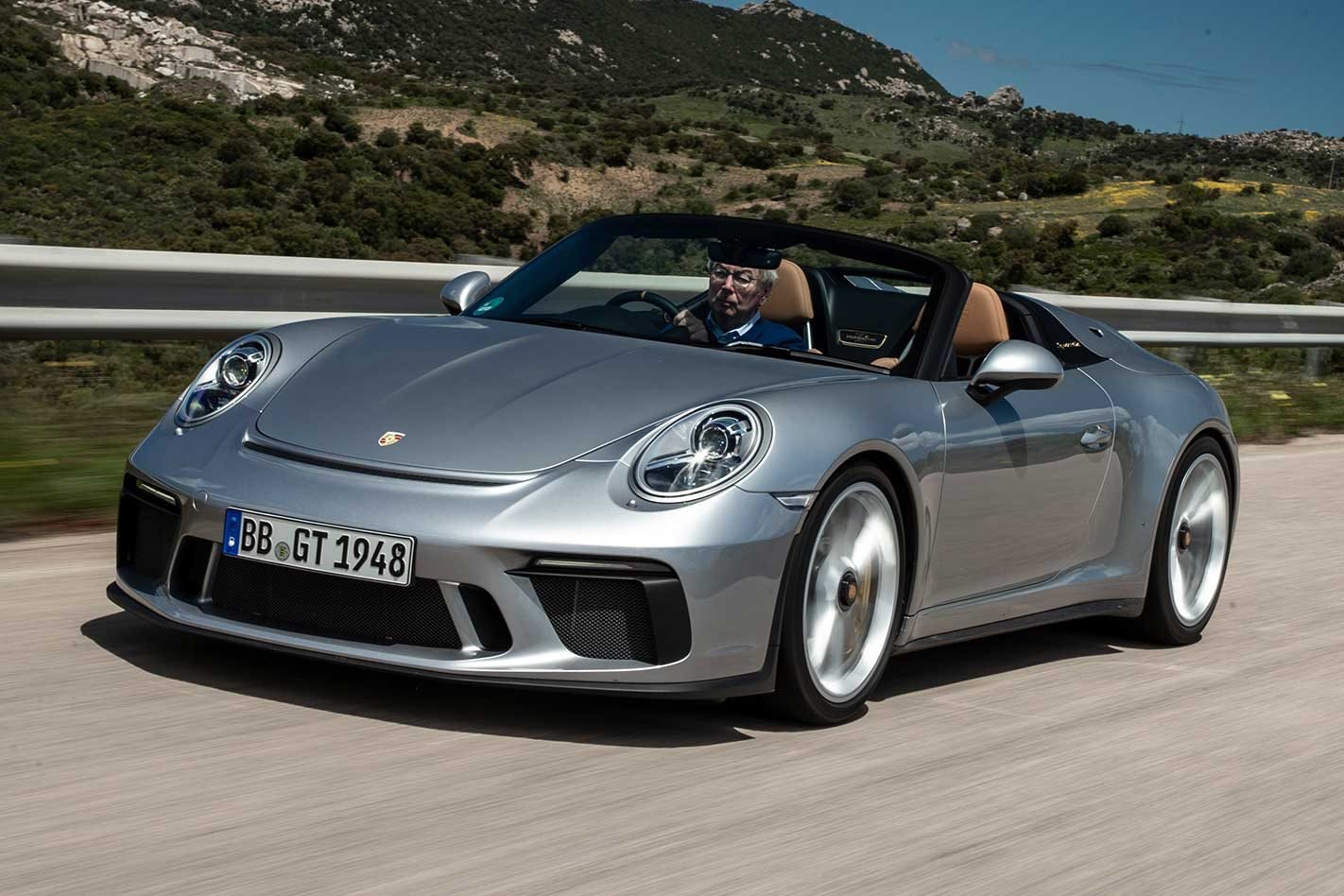The 991 is dead; long live the 991. And long live the Porsche 911 Speedster.
Before the era of the best-selling 911 to-date comes to an end, Porsche will hand-build 1948 fifth-gen Speedsters in its Zuffenhausen plant. The symbolic build number refers to the year Porsche was born, 71 years ago, and the new Speedsters will share a production line with an extra batch of 2500 991 series GT3 RS fitted with upgraded lower-emission engines.
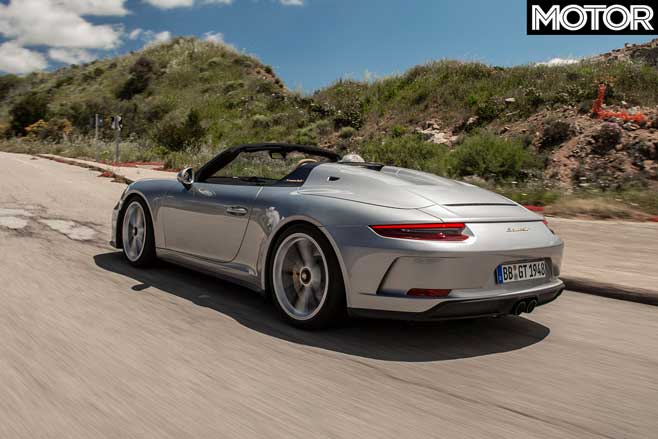
The Speedster will be available with the optional $35,000 Heritage Design pack which is Porsche’s new millennium nod to early Speedsters. Created by Style Porsche, the pack includes a black and Cognac interior with gold details, white racing decals on the doors and bonnet (the buyer can specify a two-digit number), and ’50s and ’60s-style Porsche crests and gold badges. Green and white-on-black instruments hark back to Ferdinand Porsche’s very first cars.
The Heritage Design pack is expected to do for the head-turning Speedster what the Weissach kit did for the GT2 RS and 918: Enhance the car’s appeal and boost resale value. Thankfully the contrasting white paint and matching ‘spears’ on the nose are delete options, as on our test car.
The roof of the first Speedster, the 356 launched in 1954, was neither waterproof nor insulated, but opening and closing it was a breeze. Ever since then, the folding top has become increasingly complex, from the 964’s all-manual G-model (with its solid second-generation double-bubble tonneau), to the overkill 997, which needed a YouTube instruction video to work out how to raise and lower it.
But just because it’s 2019, don’t expect to go from hair-in-the-air to becalmed ‘barnet’ in the single push of a button. No, the new Speedster is once again a jump out, then jump back in affair.
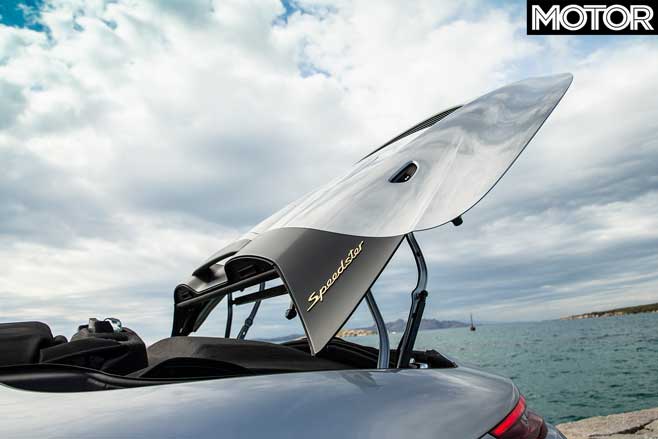
First, you release and lift the roof by pulling the cabriolet button. Next, get out of the car, unlatch the carbon-fibre composite compartment lid and swing the assembly backwards and up before folding two canvas fins inwards. Only then will the soft-top neatly stow away in a square recess between the firewall and the engine.
Design-wise, it’s instantly obvious that the cowl and side windows were lowered by 50mm and the fabric headgear pulled further down and back for that coveted retro-look go-faster effect.
While it is allegedly safe to run the newest Speedster through a car wash, wind noise at speed is as deafening as ever, and gale force buffeting can weave dreadlocks into an otherwise conservative hairdo. A wind deflector is conspicuously absent.
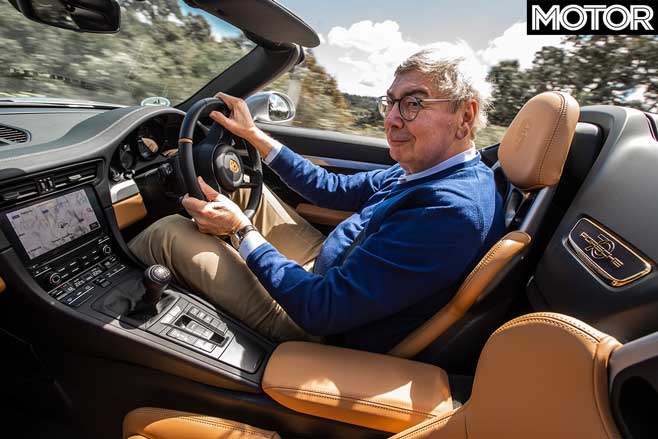
The secondary cargo space behind the seats can only be described as minuscule and behind that, a pop-up roll-over protection system is concealed in the twin ‘speed bumps’.
Masterminded by Porsche’s GT division, the Speedster comes with lightweight quarter panels and lids, magnesium rims, a thinwall exhaust that has shed 10kg, and fabric loops instead of conventional door handles. At 1465kg, it is only 115kg heavier than a 718 Boxster T.
It’s a chilly morning, the wind is blowing, and there is drizzle in the air, so the top stays up as we crank up the cabin temperature by a couple of notches. The Heritage pack is available with air-con, satnav and a 150-Watt sound system but two extras are essential: The lift system that increases the critical front spoiler clearance and adaptive LED headlights.
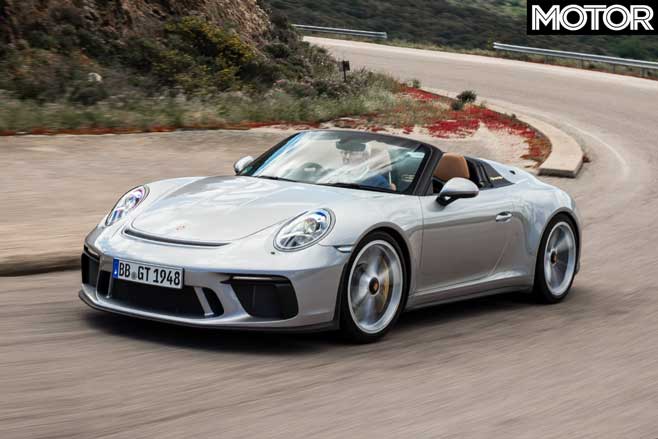
The pack also comes with carbon-fibre seats which cannot be heated, or adjusted in height, but 18-way sports seats are a sensible no-cost alternative. The driving position is different in that the field of vision is clipped at the top by the lower cowl and visors. The rear-view mirror gives a letter box-slot view of the power domes and a small crossbar that also acts as a high-mount brake light.
Although the Speedster is a tighter fit than any other 911, the cocoon-like packaging is actually part of its appeal.
The revised atmo 4.0-litre six makes 375kW at 8400rpm and 470Nm at 6250rpm, shading the GT3 powerplant by 7.5kW and 10Nm. It does this using high-pressure injectors, a back-to-the-roots valvetrain without hydraulic clearance compensation, seven-stage dry-sump lubrication and, most importantly, six individual instant-response throttle bodies. And it revs to 9000rpm (insert smile emoji).
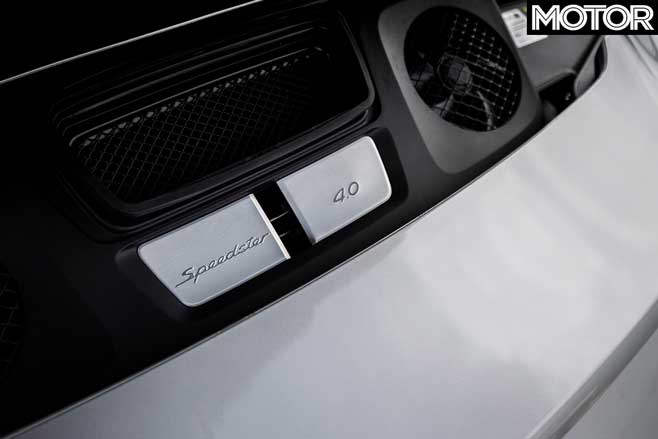
With its redesigned exhaust, which includes two mufflers and particulate filters, it sounds and feels quite different from the pre-EU6d-TEMP (Euro emissions standards) GT3 unit. Kraftwerk sources say the next GT3 will use an even more potent version of this engine. At day’s end, with the tank two thirds empty, consumption worked out at 19.8L/100km.
Like the GT3, the final iteration of the 991 family cannot be ordered with the slick PDK transmission, it’s manual only. Thankfully, the standard six-speed is more precise than the rather indifferent and slow seven-speeder fitted to the base model. Accelerating from 0-100km/h in 4.0sec, the Speedster loses just one tenth to the 331kW Carrera S cabriolet and thanks to its smaller frontal area, wins the top speed duel by an equally academic 310 to 307km/h.
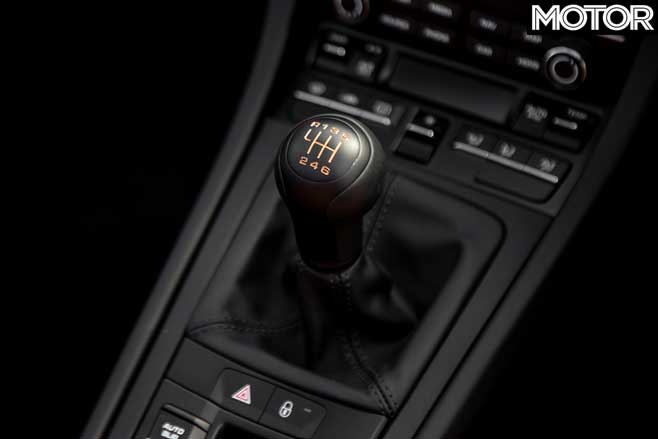
Michelin Pilot Sport Cup 2 tyres on centre-lock forged 20-inch alloys are standard and wet tarmac, puddles and aquaplaning grooves should immediately trigger an alarm. While working heat into the rears is not exactly rocket science, the front tyres take longer to warm up and unless tyres are up to temperature, snap oversteer followed by snap understeer or vice versa can be impromptu heart-stoppers.
Once maximum grip is confirmed, the mechanical diff lock aided by torque vectoring and on-demand brake actuation does what it can to immunise the Speedster against less-than-optimum surfaces and treacherous corners. Further assistance is provided by the speed-related triple-phase rear-wheel steering, awesome carbon-ceramic brakes and adjustable dampers with two settings: Normal and Sport.
Luckily the usual active-safety features are also there to step in and prevent disgrace. If you have the reactions of Walter Rohrl (and very few do), deactivating traction control and/or stability control is an option, but bear in mind that breakaway can be sudden, power oversteer can be a tightrope act, and the ability to balance steering and throttle inputs can be the difference between drama and tragedy.

The new Speedster is a strong investment and a natural poseur, but it is too valuable and vulnerable to be used as a track tool or daily driver, and it is too noisy and uncomfortable for long freeway journeys. Like previous iterations, Speedster gen-five prefers the open road, blue skies and enough room to move in case its owner feels like showing off.
In this price bracket, the Speedster is beaten on points by the more sensible 911 Turbo S and the more wicked 911 GT2 RS. As an icon, however, it is credible and desirable and certainly involving enough to provide thrilling fresh-air fun.
Just don’t lose any sleep over the fact that the new Speedster was sold out even before the first production model rolled off the line. Proof that Porsche marketing guys are every bit as good as their R ’n’ D comrades in creating one cool object of desire after the other.

FAST FACTS 2019 Porsche 911 Speedster BODY: 2-door, 2-seat roadster DRIVE: rear-wheel ENGINE: 3996cc flat-six, DOHC, 24v BORE/STROKE: 102.0 x 81.5mm COMPRESSION: 13.3:1 POWER: 375kW @ 8400rpm TORQUE: 470Nm @ 6250rpm WEIGHT: 1465kg POWER-TO- WEIGHT: 250kW/tonne TRANSMISSION: 6-speed manual SUSPENSION: struts, adaptive dampers, anti-roll bar (f); multi-links, electronically-controlled dampers (r) L/W/h: 4562/1852/1250mm WHEELBASE: 2457mm TRACKS: 1551/1555mm (f/r) STEERING: electrically assisted rack-and-pinion; rear-axle steering BRAKES: 410mm ventilated/drilled discs, 6-piston calipers (f); 390mm ventilated/drilled discs, 4-piston calipers (r) WHEELS: 20.0 x 9.0-inch (f); 20.0 x 12.0-inch (r) TYRES: Michelin Pilot Sport Cup 2, 245/35 R20 (f); 305/30 R20 (r) PRICE: $604,800
PROS: Brilliant engine; manual transmission; collectible CONS: Wind buffeting; snappy chassis; twice the price of GT3 RATING: 4.5 out of 5 stars

